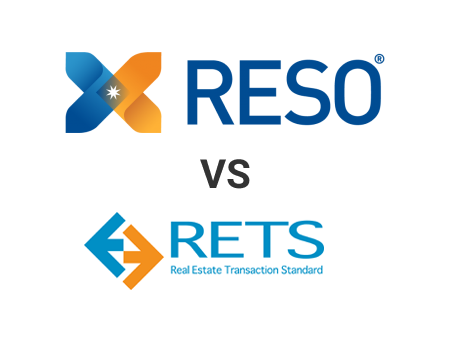RETS, or the Real Estate Transaction Standard, was launched in 1999 by the National Association of Realtors and other partners.
RETS was developed as a technology to exchange standardized real estate listings between different software systems – mainly between Multiple Listing Services and real estate websites. While the RETS protocol has been the backbone of the real estate industry for nearly 20 years, serving as a bridge for millions of real estate transactions, it is being replaced by newer and better technology, namely the RESO Web API and the Data Dictionary.
But if RETS was or is still functioning, why replace it? Let’s take a look at the main reasons why the RETS feed is obsolete.

1. The National Association of Realtors Decision
As mentioned above, the National Association of Realtors developed RETS as a technological solution to standardize data within the real estate industry, especially since it was highly decentralized. Hundreds of different MLSs had their way of storing and transferring listing data, but RETS was able to put a dent in it by changing the way databases were created and managed.
After coming up with the RESO Web API, the National Association of Realtors decided to withdraw all support for RETS in favor of their newer solution. Also, REALTORS mandated that all MLSs adopt the Real Estate Standards (RESO) Data Dictionary and the RESO Web API by December 2018. This is the end of the road for RETS and an excellent beginning for RESO.

2. Higher Maintenance Costs
In the old days of RETS, website owners had to develop custom import solutions to bring data to their local server. This solution has a few drawbacks. For example, your development costs would skyrocket by creating custom import solutions. The import itself could be tricky sometimes, especially in the first years after RETS was released.
The RESO Web API makes it easier to pull MLS database info without having to work with a feed like RETS. On the other hand, if you want to have a copy of the database on your server, it’s also possible. RESO brings more flexibility overall, catering to different types of real estate websites.
3. It’s Older Technology
The Real Estate Transaction Standard, as it was designed in the first place, included several trade-offs. Since it was based on XML, the framework required real estate website owners to download entire databases of listings to their servers before running updates periodically to verify that the information within the listings was still accurate. MLS listings databases usually contain hundreds of GB of property information, descriptions, pictures, and videos.
As such, real estate agents and brokers had very high website hosting costs. Another issue was the fact that the XML feed usually needed quite a bit of time to update (imagine downloading a 2-3 GB update daily). On top of that, having copies of their databases scattered across the internet posed a security risk for the MLS.
4. RESO Keeps RETS Legacy
Although MLSs, brokers, and agents are urged to transition to the RESO Web API as soon as possible, it’s not necessarily the end of RETS. All RETS tools (legacy) will be available indefinitely for those implementing the new RESO system. The availability of these tools makes transitioning to RESO so much easier.
5. RESO Maintains & Improves all RETS Benefits
The National Association of Realtors built on their experience with RETS and developed RESO Web API technology as the most accurate and fastest IDX solution on the market today. The RESO Web API provides data transfers as well as data sharing in a much safer environment. This is because, whereas RETS used a slow XML feed, RESO is built upon an API or Application Programming
The API provides excellent security and higher speed when retrieving MLS listing data since all processes and rules are combined in a single component.
Just like RETS, the RESO API allows website owners to pull listings from the MLS database directly to their website. The difference between the two is that RESO allows real estate websites to connect to MLSs directly and query data on the fly – this means better listing accuracy for your website’s visitors.
On the other hand, you can opt to store all listing data on your website to get a better SEO score. You can get thousands of property pages on your website in just a few minutes. Also, each property page URL can be customized according to your needs.
All in all, the RESO Web API, along with the Data Dictionary, have several advantages over RETS – these advantages lead to the abandonment of RETS in favor of RESO.
- Easier setup & integration.
- Increased security for agents as well as MLSs
- Frequent updates – more accurate information
- On-the-fly queries – which make your website faster
6. MLS Import is a RESO Technology Provider
And now we share the best news for last. MLS Import is a RESO technology provider. Our software allows any MLS member to connect his website to MLS RESO Web API with any of the compatible themes. Compared to IDX plugins, MLS Import offers an organic integration solution like no other, as it allows you to manage MLS listings directly from your chosen theme as if they were added manually, even if they are actually imported and synchronized from the MLS server directly to your site.
Table of Contents


